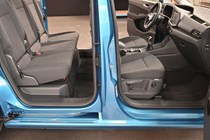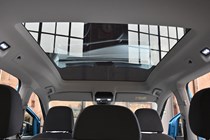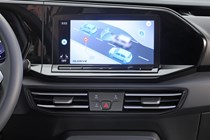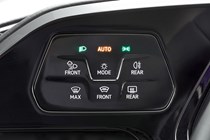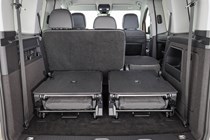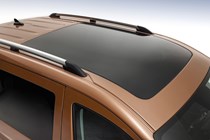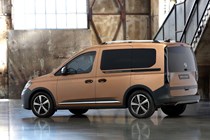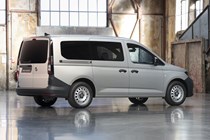Volkswagen has unveiled a brand-new version of its Caddy Life MPV. Based on the Caddy van, this is the kind of practical people mover that goes toe-to-toe with the likes of the Citroen Berlingo, Peugeot Rifter and Ford Tourneo Connect.
But although this means a boxy, van-like body for plenty of passenger space inside, the latest Caddy brings surprisingly striking looks and a host of very clever technology to what would traditionally be a very practical party.
Set to open for orders in October 2020, the new Caddy Life will begin arriving at UK dealers in early 2021. Here’s what we know so far.
What’s new for the Volkswagen Caddy Life?
Everything. VW claims every single bolt has been under the microscope here, and in addition to all the visual changes you can see, what you can’t see is that beneath the skin the new Caddy becomes the first commercial vehicle to use the ubiquitous Volkswagen Group MQB platform.
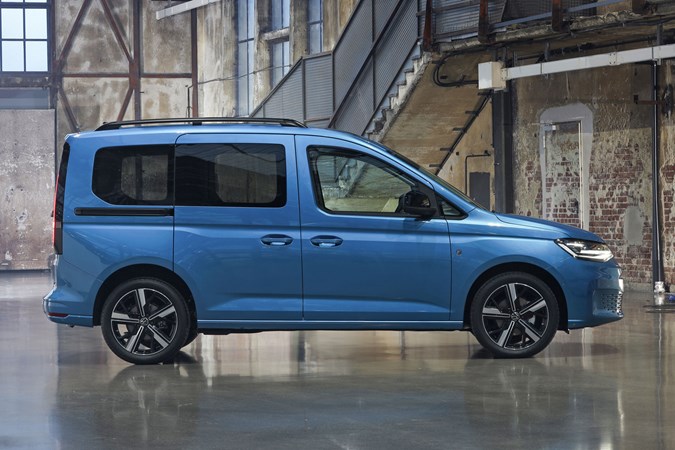
This is the structure that underpins everything from the VW Golf to the Audi TT sports car and Skoda Kodiaq SUV. It’s great news for Caddy Life buyers, because it means the new model should be even more car-like to drive than the one it replaces.
In fact, VW drew a number of parallels between the Caddy Life and the latest Golf Mk 8, which is just starting to arrive in UK showrooms now.
The new platform means the Caddy Life is also far more technically sophisticated than it used to be, with innovations in terms of driver assistance and safety as well as infotainment and the driving experience.
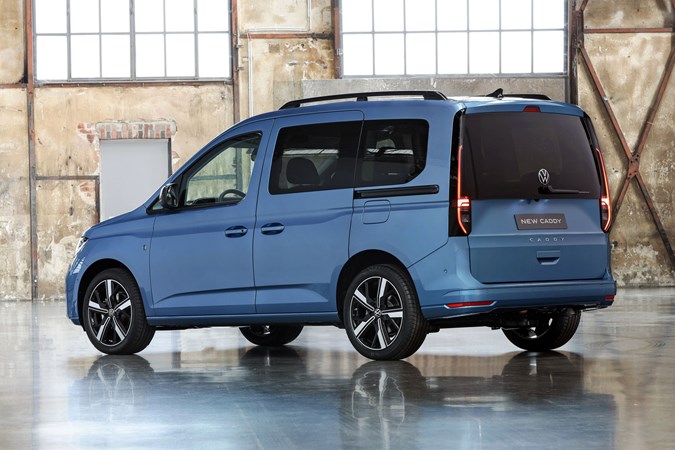
The way the new version looks really signals the upgrade, too. The new slender headlights, available with full-LED technology for the first time, and blended-in lower front grille give it a surprisingly futuristic appearance, while the distinctively curved roof boosts the aerodynamics, helping to save fuel.
At the rear there are new upright LED taillamps that again looks very modern, while the large glass area of the top-hinged tailgate boot lid appears very fresh and funky compared with most van-based people carriers.
Does it still come in regular and Maxi sizes?
As before, the new Caddy Life comes in two lengths: standard and Maxi.
The standard model is slightly longer than the vehicle it replaces, while the Maxi is slightly shorter – and as a result looks much less ungainly.
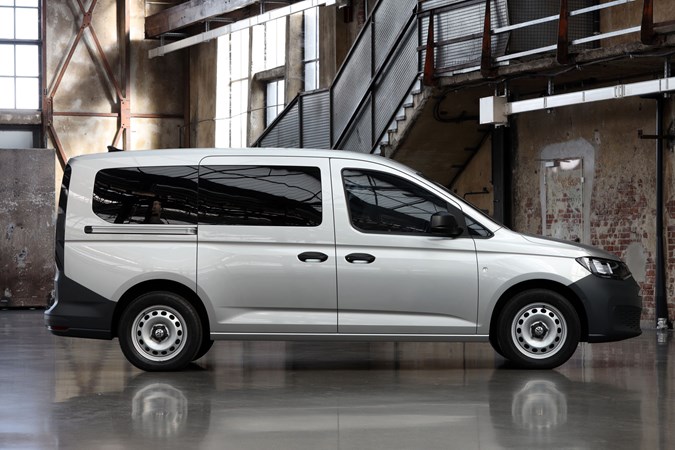
Both still have enough space inside for up to seven passengers, though obviously the boot of the Maxi will be larger when all seven seats are filled. VW is yet to release details of the luggage capacity for the Life variants, but the vehicle has more distance between the rear wheel arches inside, so should prove roomier, regardless.
Will there be different trim levels?
Exactly how this will translate to the UK market remains slightly up in the air, but German buyers will be able to choose between regular, Life and Style trim levels.
Details of what each will come with is still to be set, but you will get more kit for your money than before, we’re told.
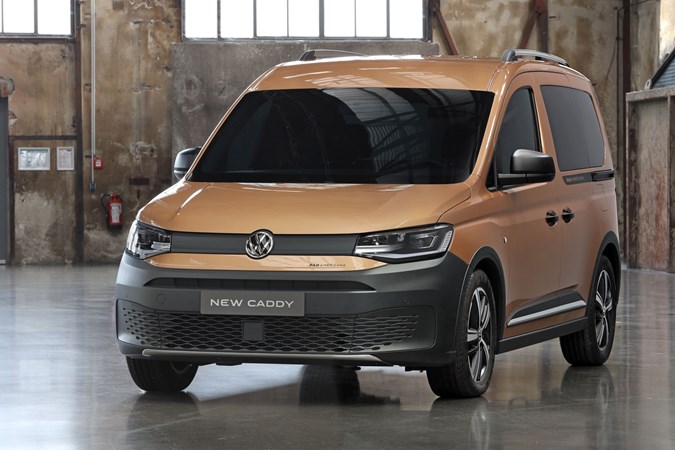
In addition to this, VW has already been showing potential special edition versions called the Panamericana (above) and the Edition – the former looking like an Active-grade Ford, with black plastic body-cladding and lifestyle aspirations, the latter cranking up the sportiness, with big 18-inch alloy wheels and glossy black detailing.
No word yet on whether these will come to the UK; ditto the Beach and camper versions that have also been mooted.
Does it feel like a van inside?
The Caddy has always been a high-quality product – with higher-than-average prices to match – and the latest version takes this even further.
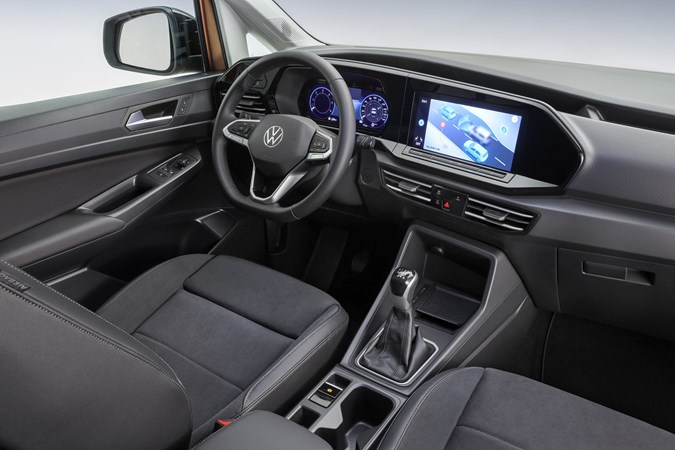
Buyers can opt for VW’s newest MIB infotainment system and a digital instrument cluster, and be fully connected at all times thanks to a built-in eSIM and We Connect smartphone apps. There’s even talk of an in-car app store by the time the vehicle goes on sale.
There’s lots of storage space inside, but also a much more car-like appearance than in earlier Caddys.
What engines are available?
There will be three 2.0-litre TDI turbodiesel engines offering 75hp, 102hp and 122hp, and a single 1.5-litre TSI turbo petrol producing 116hp.
All come with a six-speed manual gearbox as standard, driving the front wheels; a seven-speed DSG automatic is available on the two most powerful options, and 4Motion four-wheel drive is being discussed, though is unlikely to be a big seller among UK buyers.
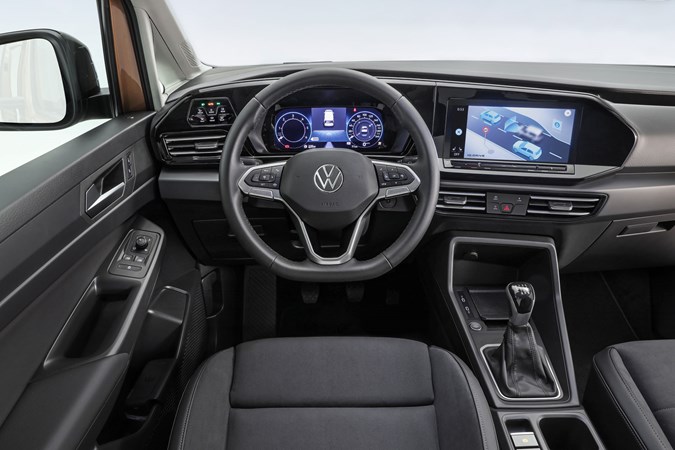
While the engines may look familiar, there are advances here, too. All the diesels use a new ‘twin dosing’ AdBlue system to reduce harmful NOx emissions, and even the petrol engine is fitted with a particulate filter.
This should make them some of the very cleanest on the road, while fuel economy is up to 12% improved, depending on model.
In the future there may be hybrid and plug-in hybrid versions of the Caddy Life, but at this stage VW is talking down the possibility of a pure electric model.
Are vans as safe as cars now?
Safety has traditionally been an area where van-based vehicles have lagged behind dedicated passenger vehicles. That’s not likely to be an accusation you can level at the Caddy Life, though.
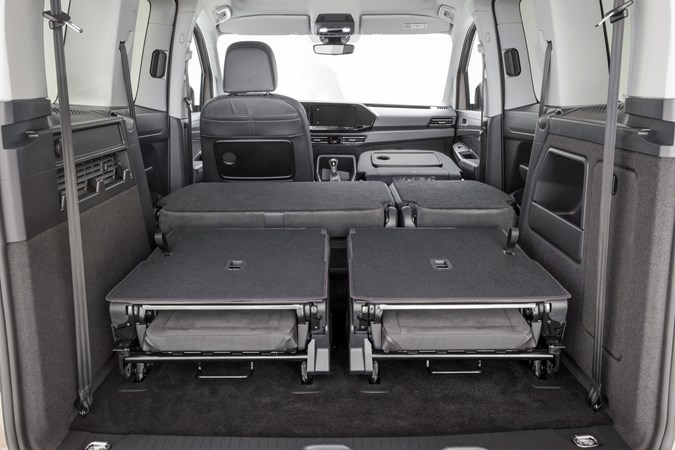
There are 19 driver assistance features available, six of which have never been fitted on the Caddy before.
Highlights include: a new Travel Assist function, which delivers modest self-driving capability on the motorway; Rear Cross Traffic Alert, which helps to prevent accidents when reversing out of spaces; and Trailer Assist, which makes reversing with a trailer an absolute doddle.
What this means for you?
While we won’t be driving it until September 2020, the new Caddy Life is clearly already angling for top-spot in the small, van-based people carrier category using technology and style as the sticks it aims to beat the competition with.
Super-clean engines, modern high-tech features and space for seven – it might also prove another example of why a van makes the best family car, too.
Read more:
>> Parkers Medium Family Car of the Year 2020
>> All-new VW Caddy van – full details
>> Volkswagen Caddy Maxi Life review (2015 model)
Just so you know, we may receive a commission or other compensation from the links on this website - read why you should trust us.








